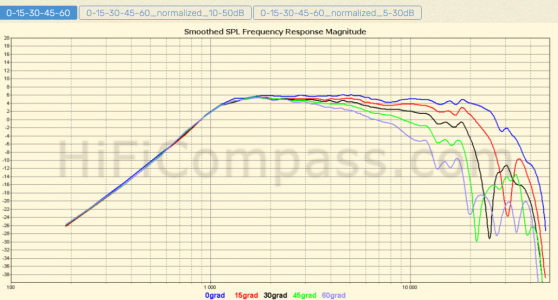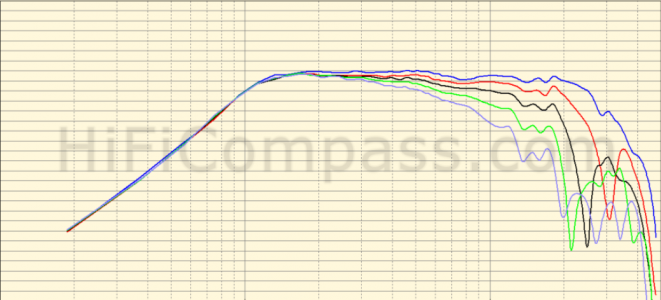Coming back to measurements regarding IndiQ bookshelf-type speakers, I think they would have done a pretty good job for the money given that they could have (apart from the surface-mounted tweeters, which (I brought up in some thread) was what originally triggered the whole discussion that spiraled into a situation where mods had to close the thread down

. ).
Take the tweeters, for example. If the peerless/tympany tweeter they use is this one (which I guess it was, back then):
https://hificompass.com/en/speakers/measurements/peerless/peerless-bc25tg15-04

It has really good consistency in off-axes responses (upto about 15k). Clearly this is one of the best budget/ value for money fabric dome tweeters around.
Here,
https://www.indiqaudio.com/diamond-achal-3-way-towers, they say they cross it to the 6.5inch mid around 2.8kHz, a point where this tweeter is comfortable and not even 3dB down from its axial magnitude response and about an octave high above its resonant frequency. This is a good place to cross for that tweeter.
They say, they use 6.5inch polypropylene cone mid driver(s). Usually well made polypropylene mids have a "warm" sound due to their higher 2nd harmonic content. But they offer adequate resolution and are pretty forgiving drivers for the money due to lack of nasty cone break ups higher up in frequency. This means, a passive crossover-wise one may not need to spend a lot. So again driver-wise it is a good choice.
Crossing a 6.5inch driver to a direct radiating (without a waveguide) tweeter at around 3k may not be a good directivity match, in general, given that some of the baffle/cabinet diffraction artifacts are now in the passband of the mid. But if it doesn't matter in subjective listening, I guess it doesn't matter to people who are interested. For full information, one cannot go guessing like above and need to look at full speaker polar measurements in a format like above

Now put these in an appropriate sized minimal baffle, well-damped box, take care of bass alignment, axial modes and port pipe resonances, you got a reasonable good bass reflex speaker on a budget.

Disclaimer: The above analysis is just guesswork from my side for a speaker like the IndiQ speakers. I don't know the actual drivers used or their specs and measurements. So the above may not be accurate in terms of describing the Indiq speakers. But in general, looking at the speaker and looking at existing 3rd party driver measurements, this is as far as I can go guesswork-wise. For anything more, one needs more polar measurement data and listening impressions..




